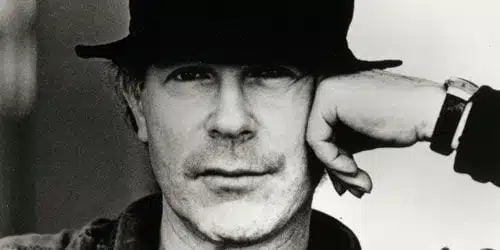
On the surface, the intimate connection between Henry Jaglom and Orson Welles appears impossible; Jaglom makes the cinematic equivalent of itchy wool sweaters, whereas Welles’ made cashmere. On the surface it is difficult to understand why actors, women in particular, would willingly work with Jaglom; he berates on one hand and soothes with the other. On the surface, it is impossible to understand how a filmmaker like Jaglom can continue to work; when weekend openings are like a horse race, it’s hard to imagine any of his films crossing the finish line.
Unfortunately, the surface is only as far as directors Henry Alex Rubin and Jeremy Workman delve in Who is Henry Jaglom? Presented with such a quixotic, maddening, divisive figure as Jaglom (to say nothing of the free access granted to his personal archives), they strain to present a complex portrait but end up with a sketch less detailed than the one on the DVD sleeve. Granted, the task of presenting a man in full within 60-minutes is daunting. However, the filmmakers do not focus their efforts and the result plays like a Reader’s Digest version of a better film.
Jaglom has been making small, personal films outside of the Hollywood system since 1970. That his films received wider release during the independent film boom that ran from the mid-‘80s to the mid-‘90s (a Golden Age one assumes we’ll never see again), is no surprise. When the temper of the times allowed for it, when cinema fans looked to Sundance every year for the Cinderella story film (sex, likes and videotape, The Brothers McMullen, Ruby in Paradise), Jaglom films such as Always, Eating or Someone to Love secured enviable distribution.
Here the filmmakers show a keen aversion to insight. How did Jaglom survive before this gold rush? How does he survive now, with fewer screens dedicated to showing his particular brand of personal, low-key explorations? Nothing leaves a person feeling emptier than questions left unasked, and that is where there exists a large hole in the center of the film.
One of the more interesting aspects of Jaglom’s oeuvre is his process, by turns a loose yet intense discovery of his themes that is equal parts John Cassavettes and Woody Allen. No formal scripts exist and Jaglom relies heavily on the input of his actors. He is extravagant with praise when they give what he wants, and equally spendthrift with disdain if they disappoint. When presented with a filmmaker who, as Welles once put it, works like a sculptor trying to find the object within the block of stone, Rubin and Workman are easily distracted.
They dwell on the salacious; the possible exploitation of his performers and indeed the women in his personal life. Instead of asking questions about the lurid, almost perverse presence of a camera lens on his intimate moments, they engage in it themselves by including what looks like a videotaped Dear John letter from then-girlfriend Andrea Marcovicci on the set of Someone to Love. It is the height of hypocrisy to watch a film that proposes a critique of Jaglom’s process while using some of his trademark tropes.
The lone bright spot is the documentation of the friendship between Jaglom and Welles. It provides insight into their attraction to one another, despite their wildly divergent approaches. Mavericks of American cinema (as defined by the cattle ranchers of the Old West, missing an owner’s brand and straying from the herd), they have both pursued a personal, idiosyncratic vision. Welles tried it within the studio system to his everlasting sorrow, while Jaglom remained outside of their grasp.
The mutual affection and respect that flowed between both men is evocatively portrayed. While Peter Bogdonavich always felt like the overeager acolyte, Jaglom is an equal in Welles’ eyes. Not only did he profess his awe of Jaglom’s technique and endurance, much of it bled into his own later efforts.
Welles’ was no stranger to working with limited means (the armour in his adaptation of Macbeth famously fashioned from hammered sardine tins), but if accounts of his efforts in making The Other Side of the Wind are accurate, he took a page directly from Jaglom’s disordered playbook. Any artist who influenced the man responsible for Citizen Kane clearly is a figure worth investigating.
The film rests on the pivot of whether Jaglom makes art or exploitation, whether he is genius or con man. There is no answer because he does and is all of those. Rubin and Workman seem to have rabble-rousing profundity in mind but only succeed in reporting that artists can be — brace yourself — temperamental assholes with whom you might not wish to share a cab ride.
If the film was as remotely fascinating and disarming as its subject (a brief clip of Jaglom psychologically disassembling Bob Costas mid-interview is evidence enough), it would have been a rewarding 60-minutes. The lone extra of note on the disc promises a reaction to the film from the subject himself, entitled Who Isn’t Henry Jaglom? Even this, an unedited half-hour interview, disappoints. Jaglom expresses his disappointment that the documentary doesn’t focus more on the work, but still claims to hand it out to potential collaborators for a snapshot of what to expect from the Jaglom working experience.
If only the film reflected that knack for contradiction. Instead, it is a lazy portrait of a fascinating figure in American film. A biography more interested with the whiff of scandal (or even creating it) than documenting the process, survival and impact of an artist dedicated to pursing his vision of the world.
